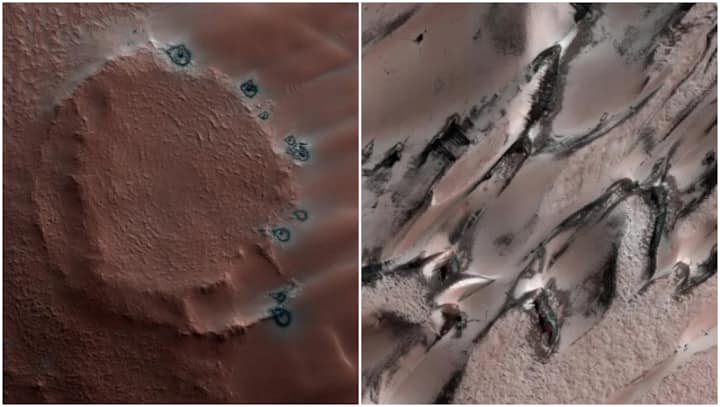Jet Propulsion Laboratory
Recent Highlights
All Stories for Jet Propulsion Laboratory

NASA’s Curiosity continues Mars expedition as team behind the rover works from home due to Coronavirus
Trendingdesk •NASA’s Jet Propulsion Laboratory said from 20 March none of the team members were present at its Southern California Lab.

NASA's Cassini mission data is still helping scientists understand the rings of Saturn
Tech2 News Staff •Cassini was in space for 20 years and has provided information that scientists are still studying and understanding.

Antarctica is losing six times more ice now than it was in the 1980s: Study
Tech2 News Staff •Antarctica's ice melting increased by 280 percent in the last sixteen years according to the study.

NASA's InSight seems to have landed at a slight angle, mission engineers not worried
Tech2 News Staff •NASA expects better images from InSight soon, once it sheds the dust covers protecting its cameras.

Mars may have enough Oxygen to sustain subsurface life today, study finds
Tech2 News Staff •Oxygen content of Martian rocks & 2 recent discoveries show that life may exist on the planet today.

NASA's Dawn spacecraft to run out of fuel, remain in dwarf planet Ceres's orbit
Ians •Dawn will lose its ability to communicate with Earth, but will remain in a silent orbit around Ceres.

NASA plans a 45-day effort to restore contact with Opportunity Rover on Mars
Ians •Opportunity rover has been out of contact since early June, due to a major dust storm on Mars.

Emmy Awards 2018 nominations: NASA's Cassini footage gets nod for Outstanding Original Interactive Program
Ians •After running out of fuel, Cassini began a whole new mission — its Grand Finale, where it journeyed into the unknown and ended with a plunge into Saturn

NASA's coverage of Cassini spacecraft's final moments earns Emmy nomination
Ians •In 2017, after nearly 20 years in space, NASA's Cassini orbiter went out of fuel.

NASA's Cassini captures eerie audio of interaction between Saturn and Enceladus
Tech2 News Staff •This recording was captured by the Radio Plasma Wave Science (RPWS) instrument on 2 September 2017



